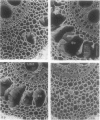Abstract
Adventitious roots of maize (Zea mays L. cv TX 5855), grown in a well-oxygenated nutrient solution, were induced to form cortical gas spaces (aerenchyma) by temporarily omitting nitrate and ammonium (-N), or phosphate (-P), from the solution. Previously this response was shown (MC Drew, CJ He, PW Morgan [1989] Plant Physiology 91: 266-271) to be associated with a slower rate of ethylene biosynthesis, contrasting with the induction of aerenchyma by hypoxia during which ethylene production is strongly stimulated. In the present paper, we show that aerenchyma formation induced by nutrient starvation was blocked, under noninjurious conditions, by addition of low concentrations of Ag+, an inhibitor of ethylene action, or of aminoethoxyvinyl glycine, an inhibitor of ethylene biosynthesis. When extending roots were exposed to low concentrations of ethylene in air sparged through the nutrient solution, N or P starvation enhanced the sensitivity to exogenous ethylene at concentrations as low as 0.05 microliters ethylene per liter air, promoting a more rapid and extensive formation of aerenchyma than in unstarved roots. We conclude that temporary deprivation of N or P enhances the sensitivity of ethylene-responsive cells of the root cortex, leading to cell lysis and aerenchyma.
Full text
PDF
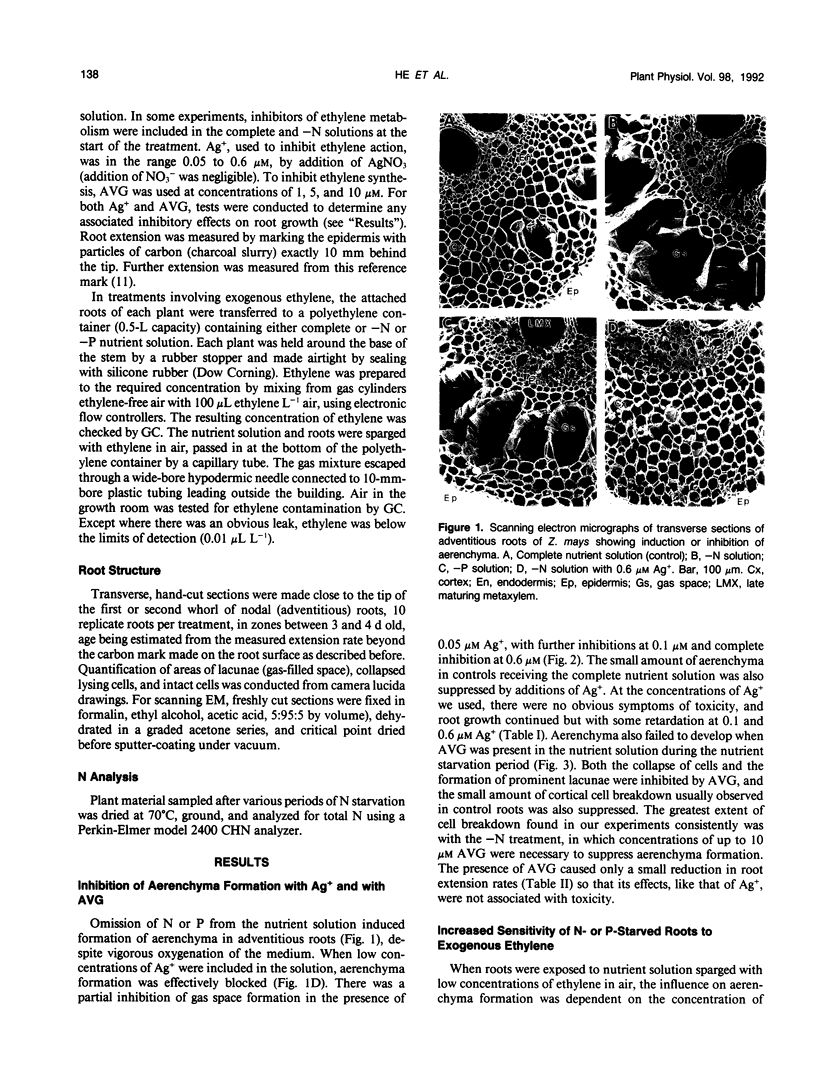
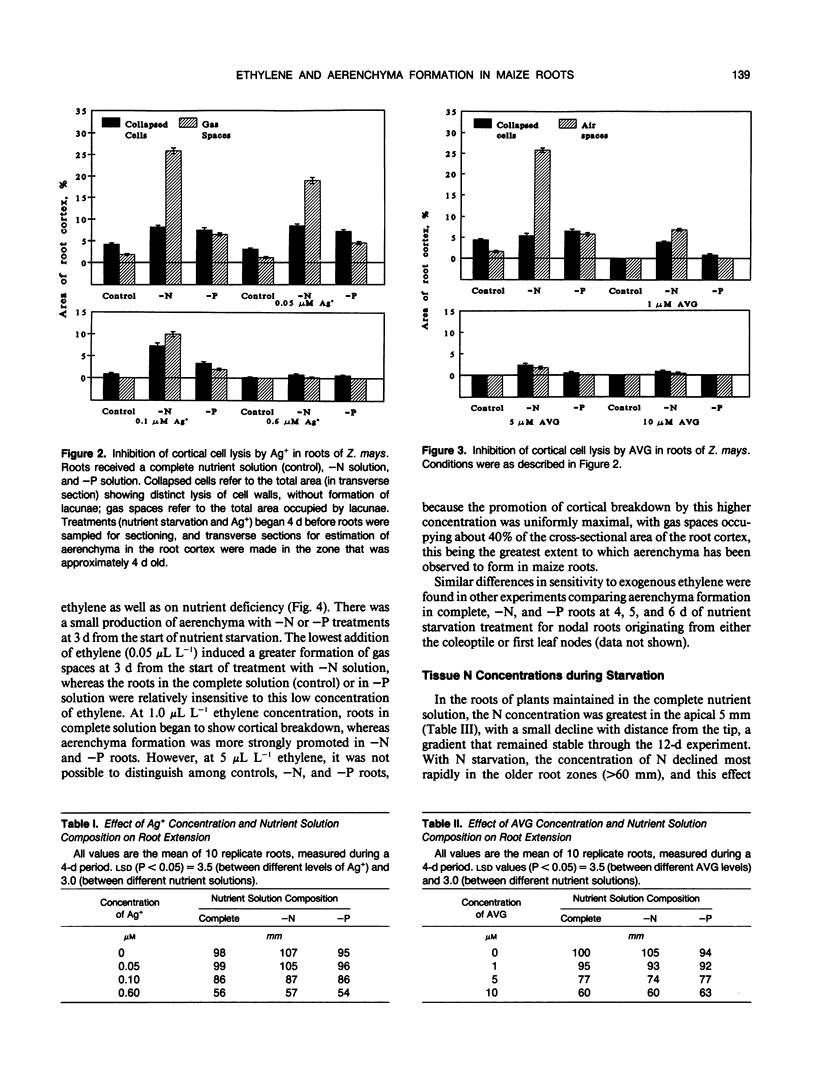
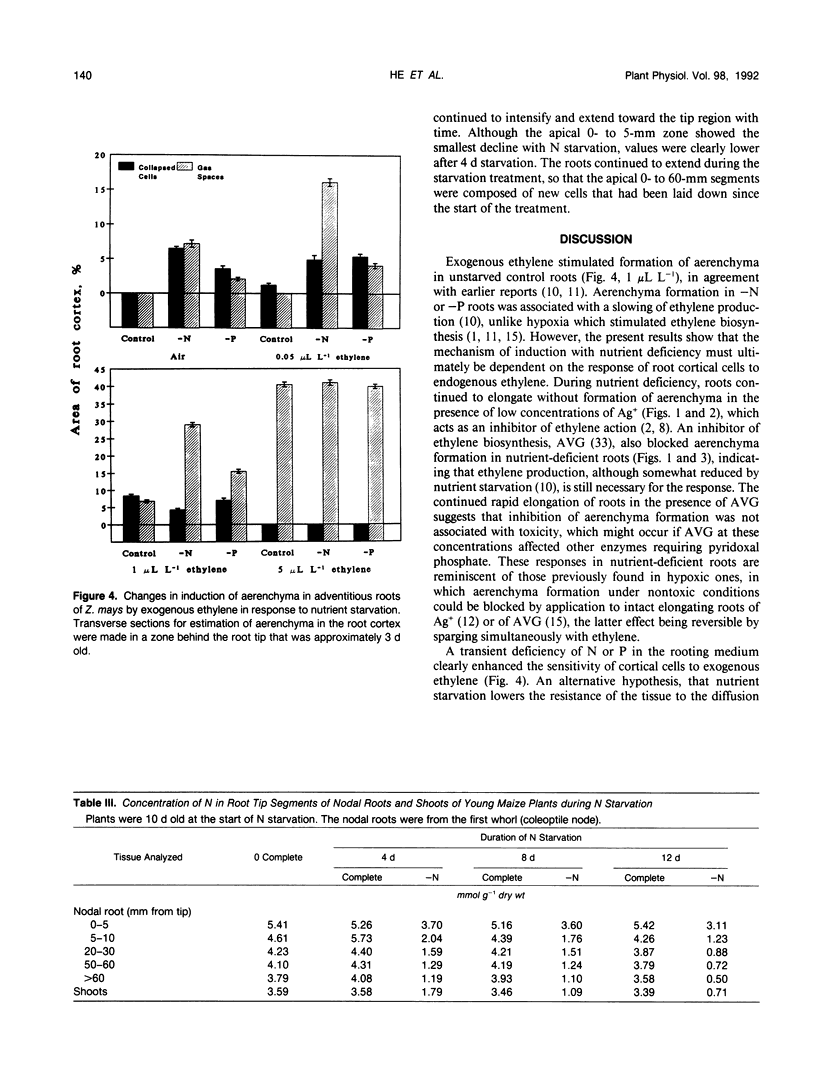
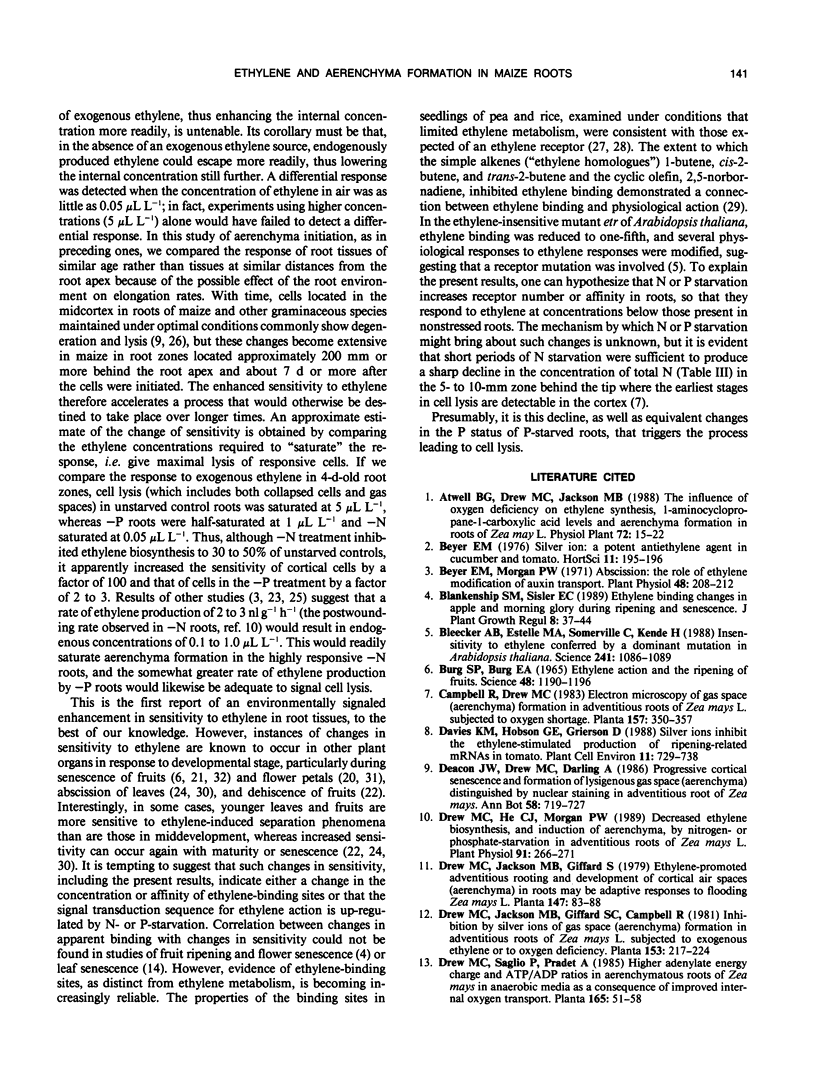
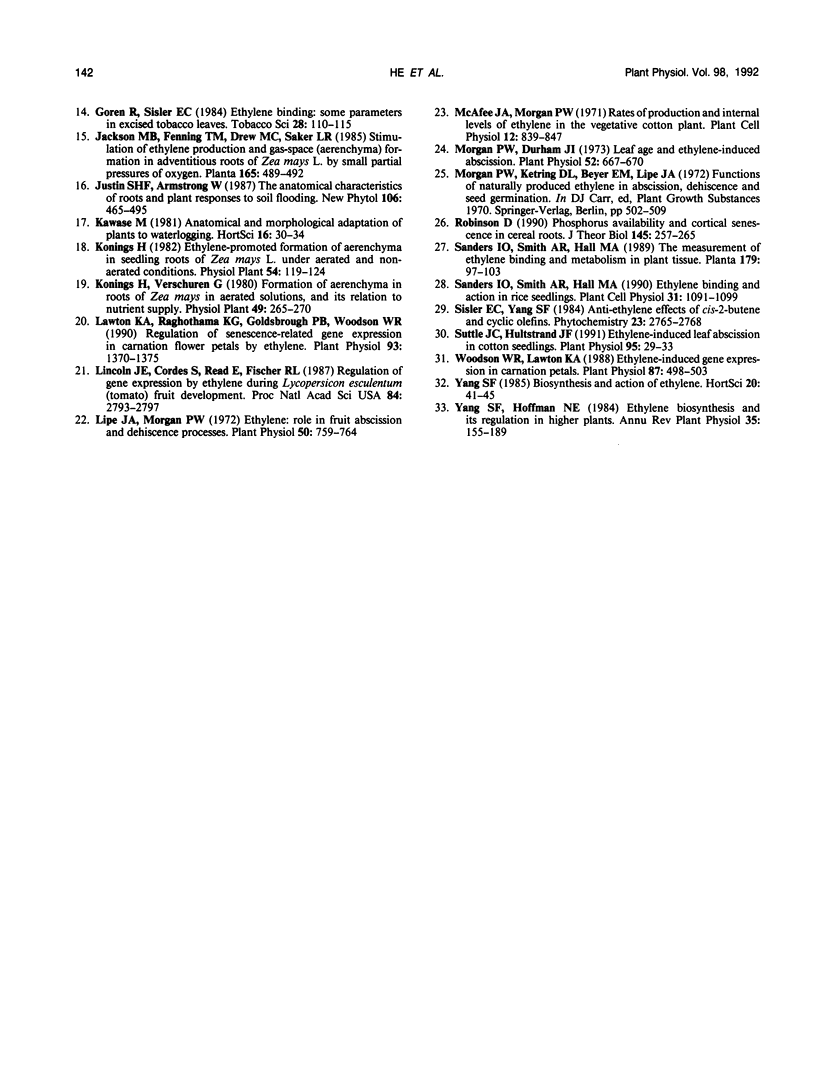
Images in this article
Selected References
These references are in PubMed. This may not be the complete list of references from this article.
- BURG S. P., BURG E. A. ETHYLENE ACTION AND THE RIPENING OF FRUITS. Science. 1965 May 28;148(3674):1190–1196. doi: 10.1126/science.148.3674.1190. [DOI] [PubMed] [Google Scholar]
- Beyer E. M., Morgan P. W. Abscission: the role of ethylene modification of auxin transport. Plant Physiol. 1971 Aug;48(2):208–212. doi: 10.1104/pp.48.2.208. [DOI] [PMC free article] [PubMed] [Google Scholar]
- Bleecker A. B., Estelle M. A., Somerville C., Kende H. Insensitivity to Ethylene Conferred by a Dominant Mutation in Arabidopsis thaliana. Science. 1988 Aug 26;241(4869):1086–1089. doi: 10.1126/science.241.4869.1086. [DOI] [PubMed] [Google Scholar]
- Drew M. C., He C. J., Morgan P. W. Decreased Ethylene Biosynthesis, and Induction of Aerenchyma, by Nitrogen- or Phosphate-Starvation in Adventitious Roots of Zea mays L. Plant Physiol. 1989 Sep;91(1):266–271. doi: 10.1104/pp.91.1.266. [DOI] [PMC free article] [PubMed] [Google Scholar]
- Lawton K. A., Raghothama K. G., Goldsbrough P. B., Woodson W. R. Regulation of senescence-related gene expression in carnation flower petals by ethylene. Plant Physiol. 1990 Aug;93(4):1370–1375. doi: 10.1104/pp.93.4.1370. [DOI] [PMC free article] [PubMed] [Google Scholar]
- Lincoln J. E., Cordes S., Read E., Fischer R. L. Regulation of gene expression by ethylene during Lycopersicon esculentum (tomato) fruit development. Proc Natl Acad Sci U S A. 1987 May;84(9):2793–2797. doi: 10.1073/pnas.84.9.2793. [DOI] [PMC free article] [PubMed] [Google Scholar]
- Lipe J. A., Morgan P. W. Ethylene: role in fruit abscission and dehiscence processes. Plant Physiol. 1972 Dec;50(6):759–764. doi: 10.1104/pp.50.6.759. [DOI] [PMC free article] [PubMed] [Google Scholar]
- Morgan P. W., Durham J. I. Leaf Age and Ethylene-induced Abscission. Plant Physiol. 1973 Dec;52(6):667–670. doi: 10.1104/pp.52.6.667. [DOI] [PMC free article] [PubMed] [Google Scholar]
- Suttle J. C., Hultstrand J. F. Ethylene-induced leaf abscission in cotton seedlings : the physiological bases for age-dependent differences in sensitivity. Plant Physiol. 1991 Jan;95(1):29–33. doi: 10.1104/pp.95.1.29. [DOI] [PMC free article] [PubMed] [Google Scholar]
- Woodson W. R., Lawton K. A. Ethylene-induced gene expression in carnation petals : relationship to autocatalytic ethylene production and senescence. Plant Physiol. 1988 Jun;87(2):498–503. doi: 10.1104/pp.87.2.498. [DOI] [PMC free article] [PubMed] [Google Scholar]



